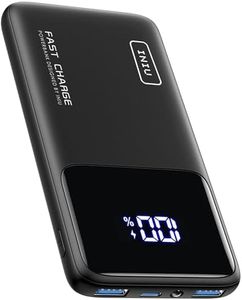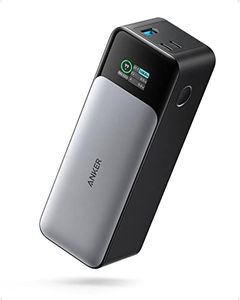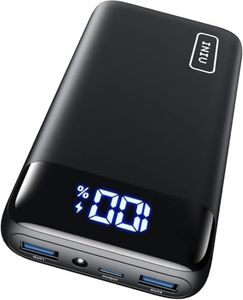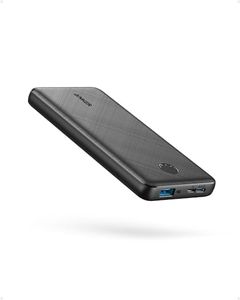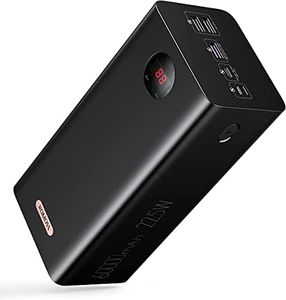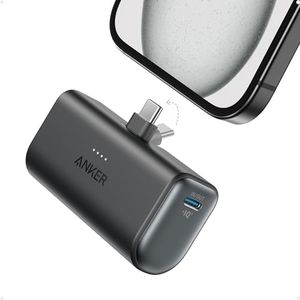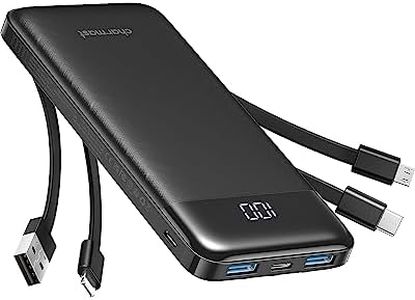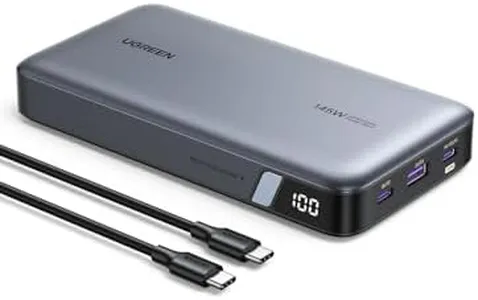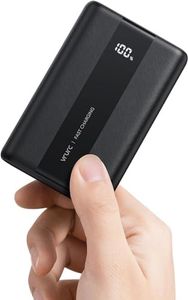We Use CookiesWe use cookies to enhance the security, performance,
functionality and for analytical and promotional activities. By continuing to browse this site you
are agreeing to our privacy policy
10 Best Android Portable Chargers
From leading brands and best sellers available on the web.By clicking on a link to a third party's website, log data is shared with that third party.
Buying Guide for the Best Android Portable Chargers
Choosing the right Android portable charger (or power bank) requires a bit of thought about when and where you'll use it. Consider how often your devices run out of battery, how many devices you need to charge at once, and whether you'll be carrying the charger in a pocket, bag, or keeping it in your car. The key is balancing size, weight, and charging capacity with how much you actually need. Examining some key features will help you understand what matches your daily life and routine best.Battery Capacity (mAh)Battery capacity, rated in milliampere-hours (mAh), tells you how much power the portable charger holds before needing to be recharged itself. A higher number means more charges for your devices, but also usually means a bigger and heavier charger. Lower-capacity power banks (less than 5,000 mAh) are slim and pocket-friendly, ideal for topping up your phone once or for emergencies. Mid-range (between 5,000 and 10,000 mAh) gives several phone charges and balances size and power, suiting daily use. High-capacity chargers (above 10,000 mAh) are heavier but can charge multiple devices or handle tablets and phones over several days, making them great for travel or outdoor use. Pick based on how long you're away from an outlet and how many devices you need to power up.
Output Ports and TypesThe number and type of output ports decide how many and what kinds of devices you can charge at once. Some chargers have a single USB port, while others offer multiple ports, including USB-A, USB-C, or even wireless charging. If you mainly charge a single phone, one port is fine, but if you regularly need to power up headphones, a friend's phone, or tablets, multiple ports are useful. Make sure the charger offers a port that matches your device’s charging cable—most modern Androids use USB-C, but double check to be sure.
Charging Speed (Output Power, Watts or Amps)Charging speed is measured in watts (W) or amps (A) and tells you how quickly the power bank can charge a connected device. Lower speeds (5W or 1A) are slower—fine for small gadgets or overnight charging. Mid-range speeds (up to 15-18W or 2-3A) are suitable for most phones, offering a much quicker boost when you’re in a hurry. Some fast-charging models go even higher. If your device supports fast charging, picking a power bank that matches this means you spend less time plugged in. If speed isn’t a priority, a lower output is usually sufficient.
Physical Size and WeightSize and weight influence how comfortable it is to carry the charger around. Slim, lightweight models slip easily into a pocket or small purse and are best for those who want a backup without extra bulk. Larger models are heavier but worth it if you need more power when far from outlets—for example, on a camping trip. Think about your usual routine: if you’re always on the move, prioritize portability. If you spend long stretches away from power and can carry extra weight, higher capacity might be more valuable.
Input Charging SpeedInput speed is how long the power bank itself takes to recharge. Slow input means waiting longer between uses, while fast input technology (like USB-C Power Delivery) refills the charger faster. If you use your power bank often and have limited time to recharge it, a faster input speed can be more convenient. This spec is less critical if you only use your charger occasionally and can leave it plugged in overnight.
Build Quality and Safety FeaturesA sturdy build resists drops and everyday wear, while safety features like overcharge, overheat, and short-circuit protection make sure your devices stay safe. If you tend to throw gadgets in a bag or use them outdoors, look for tougher builds. Safety features are always good to have, especially if you’re charging expensive devices.
